What is a resume?
A resume is a summary of your academic background, paid and unpaid work experience, and achievements. Since resume scanning is the very first step of the hiring system, the quality of a resume strongly affects whether you can get an opportunity for job interviews. If you want to get your dream job, it’s very important to make your resume outstanding!
How to write a great resume
Make your resume tailored to the specific position
When your hiring managers scan your resume, they consider if your abilities and experiences are the perfect fit for the role you are applying for. Even if you have great abilities and experiences, you are not going to be chosen without making them look relevant to the position.
What is ATS?
Why do you need to make the resume tailored to the specific position? One of the biggest reasons is the use of ATS. An applicant tracking system(ATS) is a software that scans your resume and identifies if you are suitable for the position. ATS is used by the company which has a lot of applicants so they can minimize the cost and energy to look through each resume. So, if your resume is not optimized for the specific position, it may not even reach your hiring manager.
How do you optimize your resume?
How can you conquer the ATS? The most powerful tactic is to put the keywords in the job description on your resume.

Let’s take a look at the example!
Example: application for the customer representative
Let’s say you want to apply for a customer representative position. You find a job description as below;
Seeking a customer service representative with excellent communication skills, problem-solving abilities, and a strong commitment to ensuring customer satisfaction. Responsibilities include responding to customer inquiries via phone and email, resolving issues promptly, and maintaining a positive and professional demeanor.
The bold words are key skills/qualifications. If you have any of these skills/qualifications, you should include them in your resume. Make sure to use the specific word found in the job description like below;
Customer Service Representative with a proven track record of delivering exceptional customer experiences through effective communication and adept problem-solving skills. Skilled in addressing customer inquiries via phone and email, resolving issues promptly to ensure customer satisfaction. Maintains a positive and professional demeanor in all interactions. Strong commitment to delivering high-quality service in alignment with company goals.



I’m going to explain how to put such sentences in your resume in the next section.
3 different types of resume
There are mainly 3 types of resume formats. Each type has different pros and cons. Let’s take a look at them so you can choose the best format for you!
1. Chronological Resume
A chronological resume is the most standard and conventional resume format. It presents work experience in reverse chronological order. This means your most recent employment is listed first, followed by previous positions in descending order.
Components of a Chronological Resume
- Name
- Contact : Phone number, Email, The link to Linked in profile(not necessary)
- Summary of the resume
- Work history
- Education
- Skills
Sample
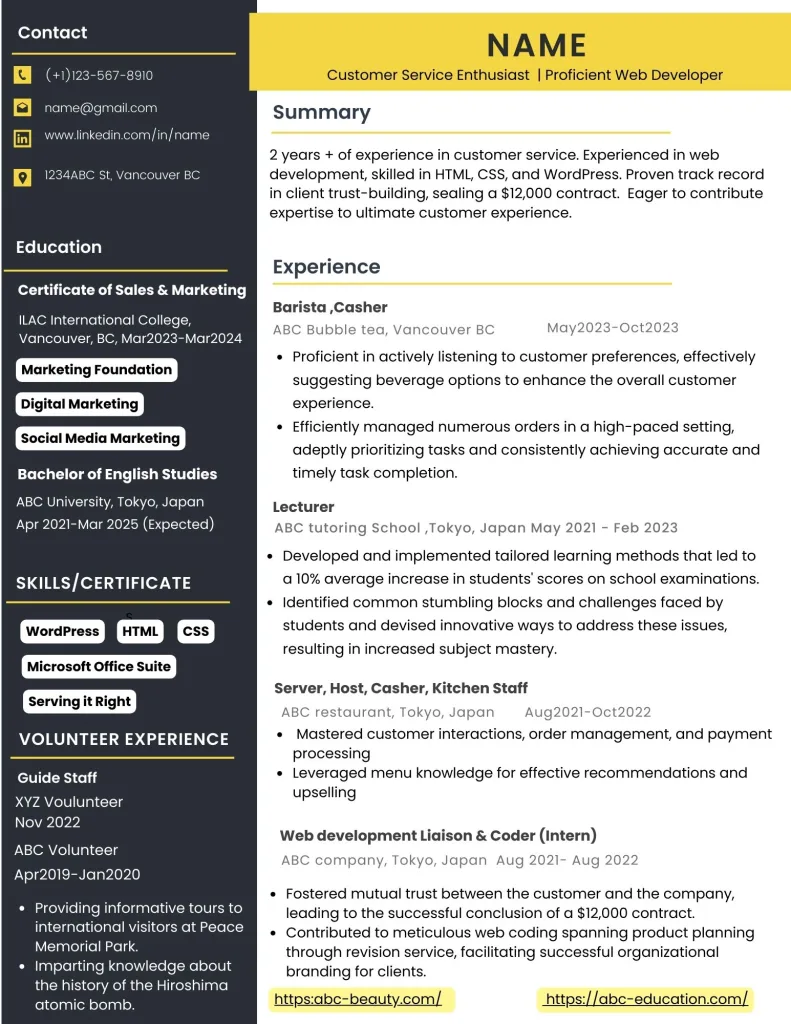

Summary of the Resume
You write a summary of your qualifications/skills. This is the section where you can grab the reader’s attention. You can write your summary with either a short paragraph as a sample or a couple of lists. It’s easier for you to work on this section after you are done with all the other parts of your resume.



I’ll give you a few tips!
Tip 1: Emulate the examples
Just google ” Resume summary examples”. There are tons of perfect examples! You will learn many expressions that you can apply to your resume summary.
Tip 2: Utilize Chat GPT
Take a blessing of technology! Let Chat GPT know all the important information in your resume, and ask it to write a summary for you. Modify the paragraph as needed.
Some people choose to write ”Career Objective” instead of summary. Career Objective is a statement of what you hope to achieve in the position you’re applying for .
Ex: Seeking a part-time position as a Server where I can contribute my exceptional communication skills and friendly disposition.
I personally do not recommend writing Career Objective because it’s obvious what you are applying for. Also summary is much more powerful to show your resume’s relevance to the position. It allows you to highlight your key skills, experiences, and achievements that align with the position, instantly demonstrating your value to potential employers.
Contact
Your phone number, mail address, and address are necessary. Having a professional email is considered to be more professional and prevents job-related information from being mixed up with random emails. You can create your professional email like “your full name@gmail.com”.
Also, if you have a LinkedIn account, you should put the link to your profile on your resume, too. Make sure to take time to elaborate the profile before you include it in your resume.



If you want to know how to build LinkedIn profile, please let me know in the comment.
Work History
List your work history in reverse-chronological order. It means you start with the most recent work experience and put the oldest one at the bottom. As sample shows, mention your position, the name of organization, work location, and working period.
Barista (Position), ABC bubble tea(The name of organization), Vancouver BC (Working location), May 2023-Sep 2023(Working period)
After you write down your position, list a couple of responsibilities of the position. The key trick here is using accomplish statements as below; A verb + A task+ A result.
Try to describe the result with numbers to make it more reliable. Avoid using personal pronouns like “I” or “my”. Don’t forget include keywords found in job description, too!
Example of “A verb+ A task+ A result”
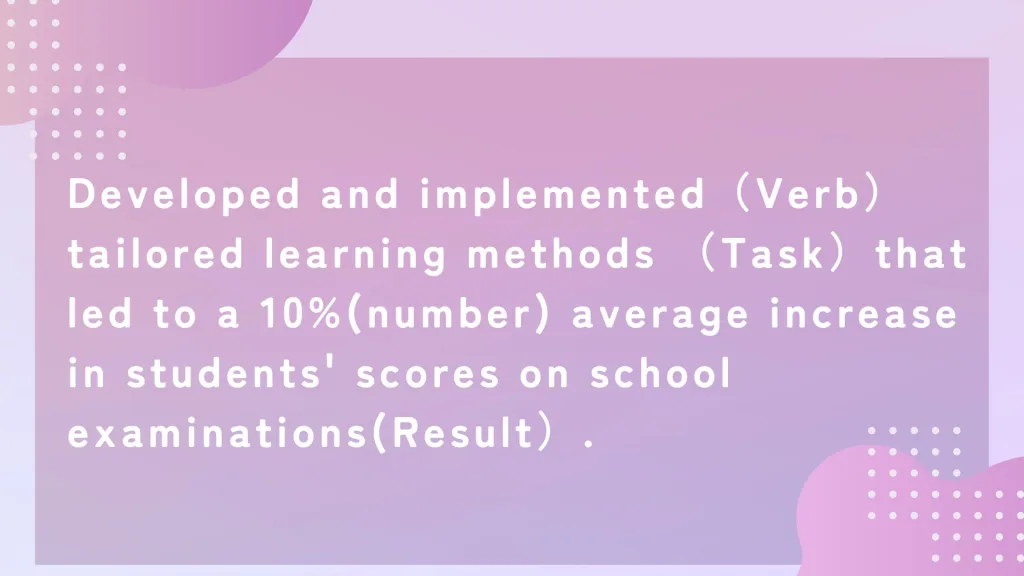

Use “Action Verbs”
Use strong action verbs! Here are examples of action verbs;
| Leadership | Responsible for | Communication | Achiever | Worked on: |
| Delegated | Accomplished | Advocated | Advanced | Arranged |
| Guided | Achieved | Clarified | Created | Compiled |
| Directed | Completed | Conveyed | Delivered | Composed |
| Enabled | Acted as | Mediated | Improved | Developed |
| Facilitated | Completed | Promoted | Managed | Organized |
| Executed | Operated | Persuaded | Produced | Perfected |
| Inspired | Secured | Consulted | Stimulated | Forged |
Action Verbs
- Enabled
- Facilitated
- Executed
- Accomplished
- Completed
- Promoted
- Created
- Improved
- Arranged
- Organized



If you search “Action verbs resume example”, you can get more examples!
Skills
Pick up your skills relevant to the specific position by using the keywords found in the job description. Include both soft skills and hard skills.
- Hard Skills
-
Hard skills refer to specific, teachable abilities or knowledge that can be quantified and measured.
Ex: programming languages, accounting principles, data analysis, graphic design, foreign languages, machinery operation, and proficiency with software tools
- Soft Skills
-
Soft skills, also known as interpersonal skills or people skills, are non-technical skills that relate to how individuals interact with others and navigate their environments.
Ex: communication, empathy, teamwork, creativity, adaptability, time management, and conflict resolution
Education
Start with the most recent degree or diploma. It is common to omit secondary education up to high school and only include educational achievements from higher education (university) and beyond. Specify the degree, name of the educational institution, duration of study, and location as shown in the sample.
If you are still enrolled in the program, write it as “Start Date – Expected Graduation Date’ or ‘Start Date – Present”.
Bachelor of English Studies ABC University, Tokyo, Japan, Apr 2021-Mar 2025 (Expected)



You can also mention relevant courses or achievements to the position. If you have great GPA, put the number, too!
Extra information
If you have any unpaid experience such as volunteer activities and extracurricular activity, you can include them, too!
Additionally, it’s not recommendable to mention hobbies and references unless it’s related to the position.
Pros and Cons of a Chronological Resume
- The most common format, with which your hiring manager are probably familiar
- Preferred format for ATS
- Highlight your professional experience. If you are confident about work experience, it’s the best format for you!
- Emphasizes gaps in employment(If you have that)
- Emphasizes frequent job changes (If you did that)
- Pretty much nothing to write if you don’t have paid/unpaid experience
2. Functional Resume
A functional resume is a skill-focused resume format.
Components of a Functional Resume
- Name
- Contact
- Summary of the resume
- Skills summary
- Work history
- Education
Sample
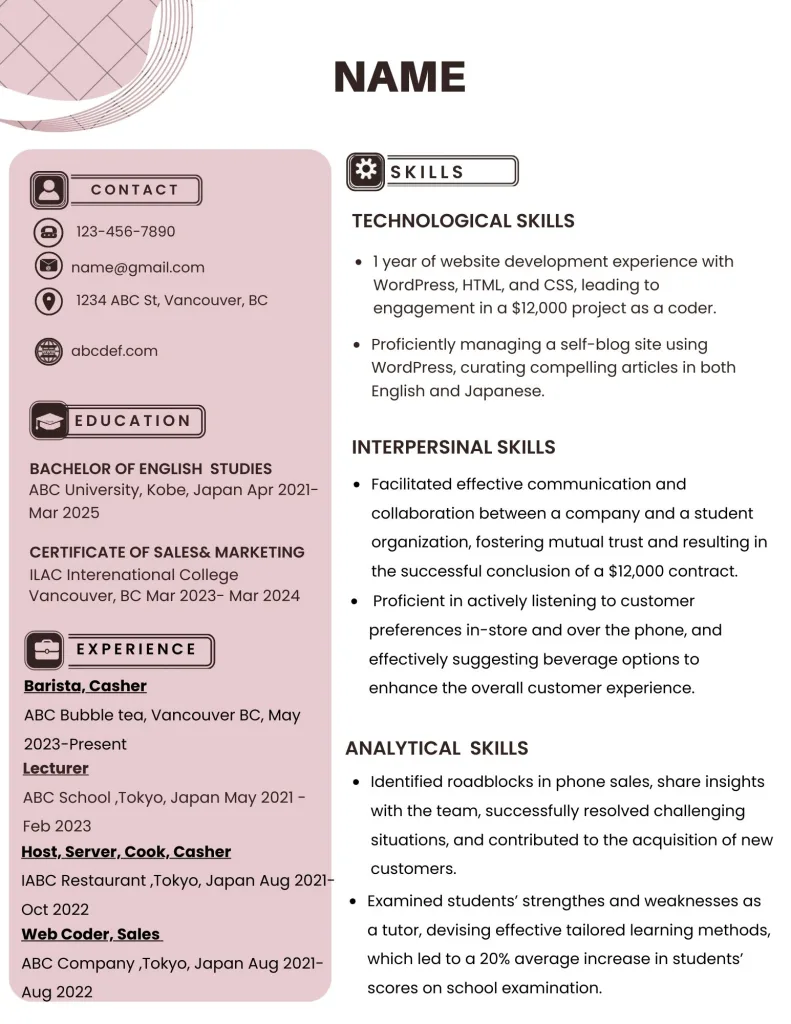

Skills Summary
Pick up skills that you want to highlight. List a couple of experiences that you got in order to get each skill.
Here is a process that you can follow to complete this section.
Try to describe the result with numbers to make it more reliable. Avoid using personal pronouns like “I” or “my”. Don’t forget include keywords found in job description, too!



You can also utilize the Chat GPT to generate a sentence. You just need to load the job description and your own experience into Chat GPT and modify the sentence as needed.
Work History
List your work experience in reverse chronological order, starting with your most recent position and ending with the oldest one. Include details such as your job title, the organization’s name, location, and duration of your employment.
By putting your work history, your skills summary will make more sense and get more compelling.
Pros and Cons of a Functional Resume
- Emphasizes skills rather than work history, which can be beneficial for career changers.
- Helpful for candidates who have who have changed careers frequently, as it allows them to showcase relevant skills without drawing attention to job transitions.
- Less emphasis on gaps.
- Employers may find it challenging to follow the candidate’s career progression
- Some recruiters may view functional resumes skeptically, as they can be perceived as an attempt to conceal employment gaps or lack of steady career progression.
3. Combination Resume
A combination resume is a combination of a chronological resume and a functional resume. In this format, you can highlight your skills while including your work experience.
Components of a Combination Resume
- Name
- Contact
- Summary of the resume
- Skills summary
- Work history
- Education
Sample
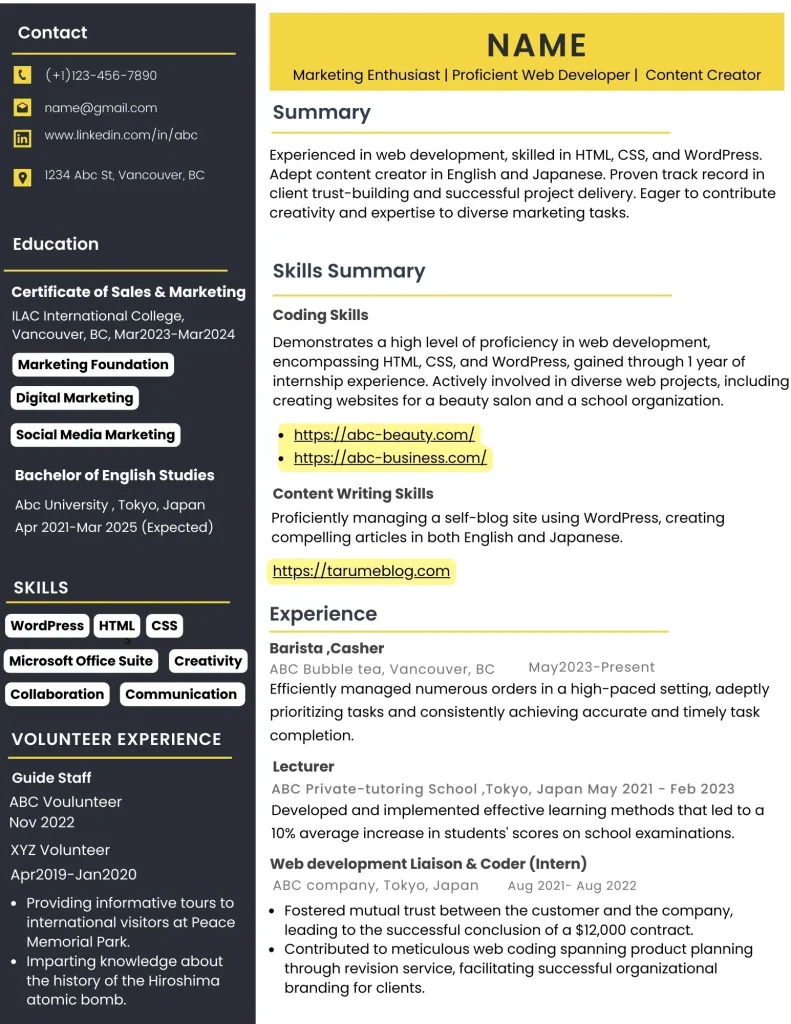

Skills Summary
Pick out the skills you want to emphasize and describe the experiences underlying those skills using the syntax of “a verb + a task + a result.” There’s no need to explain extensively in bullet points for each skill, like in a Functional Resume. One explanation per skill is enough.
Work History
You can write Work History in the same way as you write a Chronological resume.
One short description per work experience is enough since the Skills summary has already taken up some space.
- Highlights both skills and experiences.
- Easy to customize based on the job requirements.
- Employers may not be accustomed to this format, leading to potential confusion.
- Sometimes become lengthy if not carefully edited.



Pick up the most suitable format depending on your situation.
Q & A
- Should I optimize my resume even when I apply for the job in person?
-
Partially, yes. Even though there’s no way to include keywords in job scription, you can look for the job description of the same position on the Internet and check what kinds of skills the position requires in general.
- Should I optimize my resume for every application?
-
Not necessarily. It’s ideal, but not realistic if you apply for tons of positions. In my case, I created one base resume and made slight adjustments as needed.
- Which tool do you recommend to make a resume?
-
I recommend Canva, which has many templates and is easy to edit. Since the first impression of a resume is said to be made within 10 seconds, it’s crucial to create a visually appealing and easy-to-understand resume.
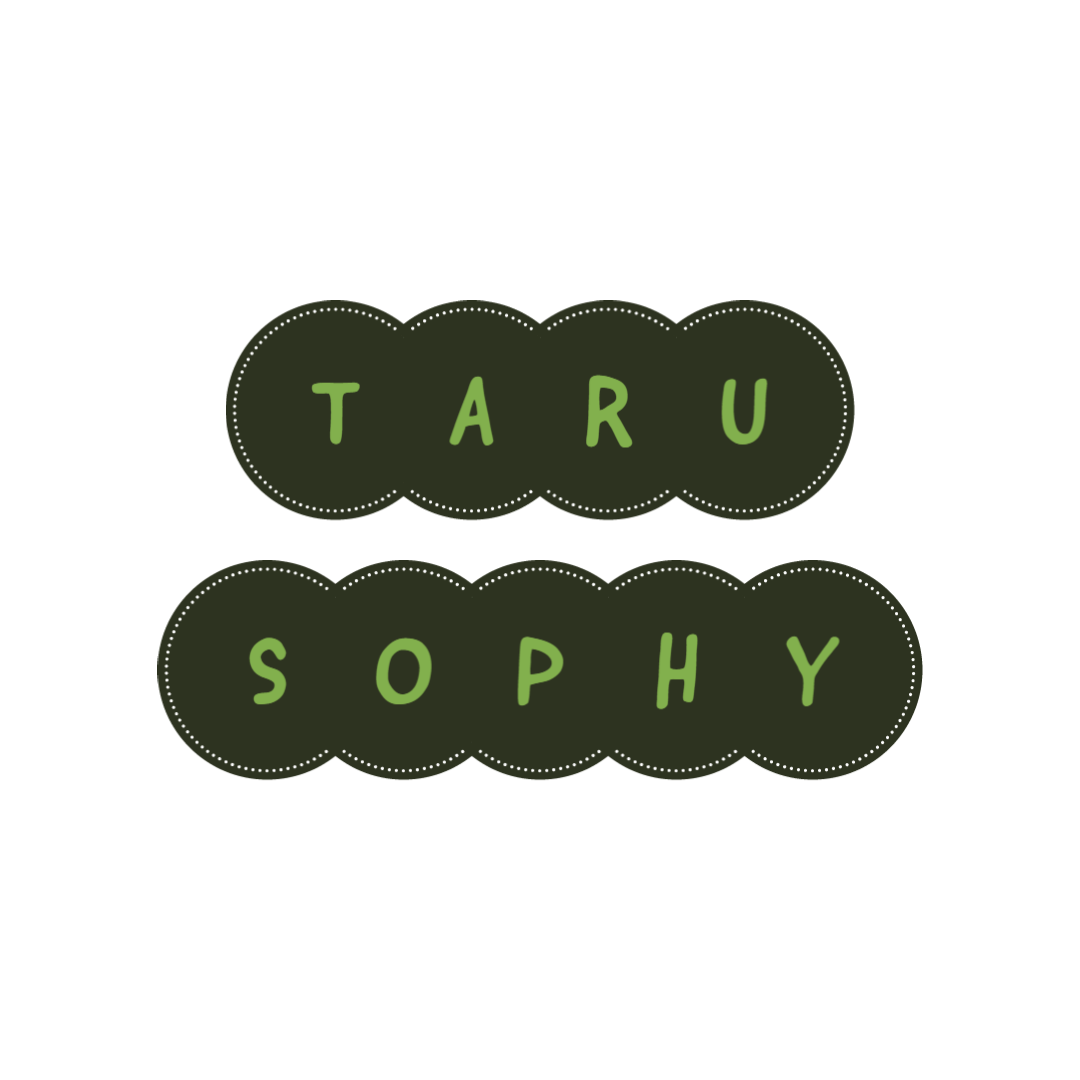
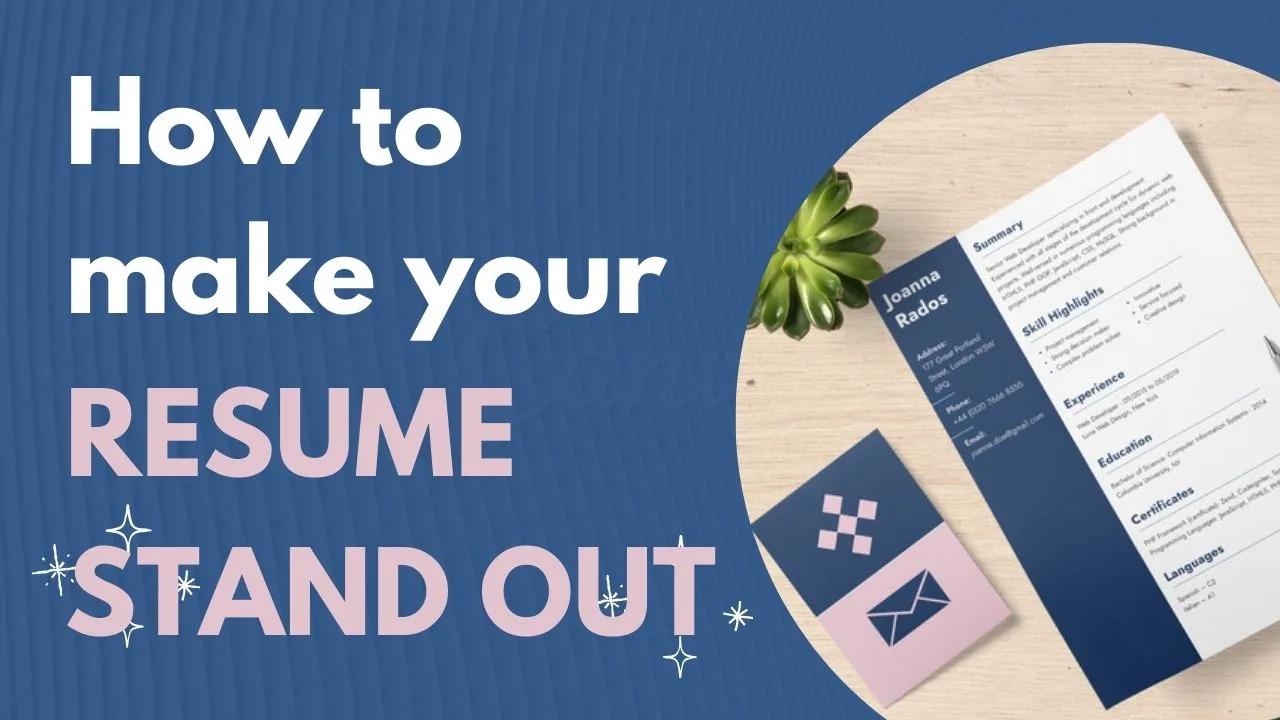



Comment
コメント一覧 (7件)
Can you be more specific about the content of your article? After reading it, I still have some doubts. Hope you can help me.
Thanks for your comment.
What kinds of doubts do you have in your mind?
Your article helped me a lot, is there any more related content? Thanks!
Hello my family member! I want to say that this article is amazing, great written and come with almost all vital infos. I would like to see more posts like this.
Thanks for the sensible critique. Me & my neighbor were just preparing to do a little research about this. We got a grab a book from our local library but I think I learned more from this post. I’m very glad to see such great information being shared freely out there.
This is the correct blog for anyone who desires to search out out about this topic. You notice a lot its virtually arduous to argue with you (not that I actually would want…HaHa). You undoubtedly put a brand new spin on a subject thats been written about for years. Nice stuff, just nice!
As soon as I detected this website I went on reddit to share some of the love with them.